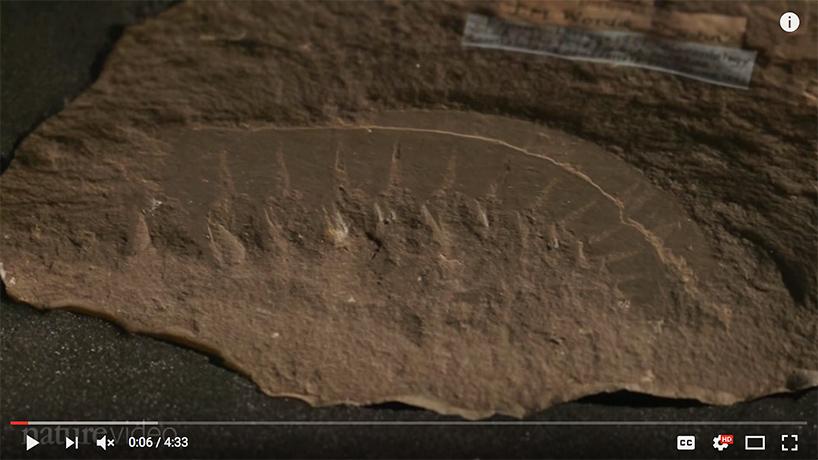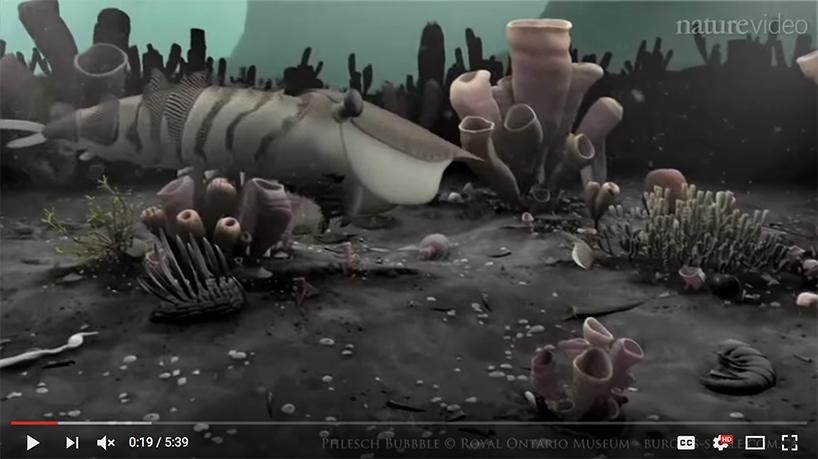Fossils of most existing phyla first appeared in the Cambrian. This is a gallery of Burgess Shale fossils with links to learn about each one. This is an overview of the fossils from the Cambrian found in the Burgess Shale from the Royal Ontario Museum. Here is a Photo gallery of fossils of the and Utah's House Range's Konservat-Lagerstätten Cambrian Explosion Fossils from Fossil Museum.
Pikaia, found in the Burgess Shale, has always been considered a chordate. This article confirms one more chordate feature: blocks of muscle tissue.
One of the most bizarre fossils is Hallucigenia with stiff spines on one side and soft tentacles on the other.

Scientists have recently found a fossil with the head revealed. The more detail scientists find in the fossils, the more we can see how they are connected to the animal phyla.
Opabinia, another small Cambrian critter, grew to eight centimeters (about three inches). Learn more at Understanding Evolution.
Anomalocaris is considered a top predator of the Cambrian period. Their compound eyes could see as well as modern arthropods.


















